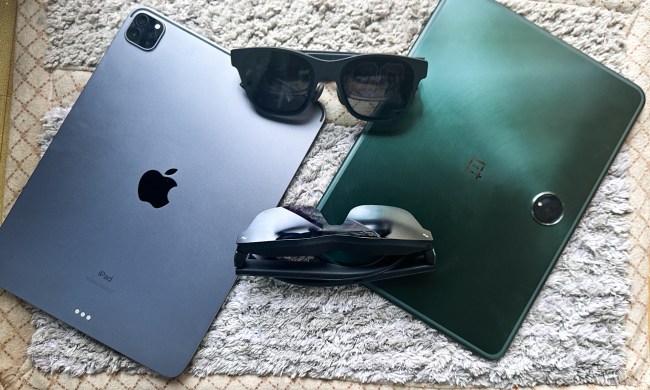Vivitar and Sakar aren’t company names most people know even though plenty of consumers own their products. That’s because the company specializes in licensing deals, creating electronics and accessories, then selling them under brands like Hello Kitty, Nickelodeon, Barbie, and more. Sakar is all about the low-cost electronics, and the quality is about what you’d expect. Still, many kids’ first gadgets are made by the company with cameras and camcorders sometimes selling under the Vivitar house brand. At this year’s CES Sakar stepped into a new market: low cost tablet maker. The Vivitar Camelio 7-inch slates are due to come out around back to school time and entice kids with the same brand power as the company’s other devices.
The Camelio tablets aren’t all that exciting at first glance. The prototypes on display at CES weren’t running very well since they’re still early in the production phase, so we weren’t able to determine if performance is sufficient. The weight is light and the design balanced and comfortable, at least. Running Android 4.0 Ice Cream Sandwich, the Camelio is powered by a single-core processor and has 8GB of internal storage. Ports include mini USB and a microSD card slot. Reps at the booth didn’t know the resolution on the display – to our eye it looked to be 800 x 480. Viewing angles and brightness aren’t the best. We can only assume no Gorilla Glass was involved, either.
None of this is surprising given the source. Plus, specs aren’t really the point here. After all, when consumers buy a Transformers camera for their kid in Toys R Us they don’t look for a Carl Ziess lens. It will be the same here. Kids and parents will key in on more important factors like price and branding. Right now the Camelio is slated to cost $130.
Instead of creating a bunch of different tablets for each brand, Sakar will instead release it under the Camelio name and sell branded theme packs separately. The theme packs will include a protective rubber case and access to wallpaper and icons that match the brand kids want. Choices run the gamut from My Little Pony, Hello Kitty, and Barbie to Hot Wheels and Thomas the Tank Engine. The nice thing about this strategy is, if your child stops liking Barbie or Hot Wheels, you can just buy a new theme instead chucking the entire tablet. Or they can change it up themselves whenever they want.
On screen, the themes are essentially a skin over Android, but kids can also choose to ditch them and run stock Ice Cream Sandwich. No word on whether the Camelio is Google Certified, thus giving access to the Google Play store and other core Goolgle apps. The tablets aren’t coming out until the fall, so there’s still time.
Right now it’s hard to tell if the Camelio Android tablet is worth your time and money. We like the concept; it’s the execution that will matter. There’s no point in buying a tablet, no matter how cheap, if it’s slow or will break after three months. We’ll try to get this one in for review when it’s ready to test it’s performance and durability.


